The Local Inspector to Trust
Basement, Foundation, Crawlspace & Structure
The foundation of the house is of utmost importance. Some settlement cracks are normal up to a certain point. Significant cracks, bowing of the foundation walls, and a pattern called “step cracking” indicate structural problems. Rafters/trusses are examined for proper alignment and strength. Various strategies are often attempted to manage crawlspace environments; it is not uncommon for conflicting strategies to be incorrectly applied at once. Rather than solving existing issues, they create new ones: ventilation, conditioning, insulation, encapsulation, and floor cover.
Exterior
Examining the exterior, we will check to make sure that the siding is properly flashed and attached to the house, make sure that all railings are secured, assess the deck construction and if it is properly attached to the house. We also evaluate the walk-ways and driveway to the house for proper pitch and explanation of present damage. Rainwater management is a very important issue. The gutters and downspouts should be clear of leaves/debris and discharge water minimum 6-8 feet away from the foundation. The ground should slope away from the foundation. We will check all exterior components of the home where they may adversely affect the structure due to moisture intrusion.
Roof
It is reasonable to worry about the roof because it’s an expensive item. I can realistically say I have climbed over 1,000 roofs in my professional career and prior businesses, I will climb most roofs exceeding the Illinois Standards Of Practice. Rarely do I meet inaccessible roofs that even a seasoned professional like me will have to avoid, in that case I will generate an HD roof video via Drone. We will evaluate the condition of the shingles looking for damaged or missing shingles, evaluate the approximate age of the shingles, check for penetrations, and make sure that the plumbing vent stack boots have not deteriorated allowing water into the attic space. When a chimney is present, we examine the condition of the crown, that there are no missing or loose bricks and that the flashing is properly done and well-sealed.
Electrical
- the service drop
- the electric meter and base;
- the main service disconnect;
- service-entrance conductors;
- service grounding and bonding;
- the service head, gooseneck and drip loops;
- the service mast, service conduit and raceway;
- the overhead service conductors and attachment point;
- panel boards and over-current protection devices (circuit breakers and fuses);
- all ground-fault circuit interrupter receptacles and circuit breakers observed and deemed to be GFCIs using a GFCI tester
- a representative number of switches, lighting fixtures and receptacles, including receptacles observed and deemed to be arc-fault circuit interrupter (AFCI)-protected using the AFCI test button, where possible;
Heating & Cooling; HVAC
We will check to make sure that the heat/ac source is operating correctly and within the proper variances as well as that each habitable room is properly vented. Oftentimes remodels/additions are found with bathrooms/spaces missing air ducts for heat/cooling air flow.
Insulation & Ventilation
Getting into the attic helps us to not only evaluate the insulation values of the home but also look underneath the roof sheathing. We will look for leaks, penetrations, and make sure that any ductwork is in good condition and connected to proper exit points.
Plumbing
Plumbing is a critical system that needs to be thoroughly examined. It is crucial that you understand that older drain waste pipes are costly to replace. Where plumbing is invisible we will check for leaks, we will scan possible moisture areas with an infrared camera to find hidden leaks that did not expose themselves yet.
- the main gas supply shut-off valve;
- the main water supply shut-off valve;
- the drain, waste and vent system; and
- all toilets for proper operation by flushing;
- drainage sump pumps with accessible floats.
- all sinks, tubs and showers for functional drainage;
- interior water supply, including all fixtures and faucets, by running the water;
- the water heating equipment, including the energy source, venting connections, temperature/pressure-relief (TPR) valves, Watts 210 valves, and seismic bracing;
Interior, Windows, Doors
Windows are opened and closed and checked for failed seals and demonstrated how to properly and safely operate them. Doors opened and closed. Walls and ceilings checked for plumbing leaks and structural problems. Garage vehicle doors and the operation of garage vehicle door openers, using normal operating controls.
Appliances
We will check all the appliances. Run the oven / stove, check the water dispenser on the refrigerator, run the microwave and dishwasher as well as the washer/dryer.
Fireplace/Wood burning/Gas
If there is a fireplace in the home, we will evaluate the damper and look up chimney if possible. When we are on the roof, your inspector will also look down the chimney for visible cracks, and check the crown and spalling bricks.
Level 2 Chimney Inspection
This is a more intrusive inspection of your chimney/flue liner where we will examine the parts of the flue that cannot be seen with the naked eye. An HD specialized camera is used to examine to flue thoroughly for cracks and deteriorated mortar in inaccessible areas. Unfortunately this is an extra/reasonable ancillary charge due to using sensitive/specialized equipment and extending the time of the inspection. If you do plan on having a Level 2 scope, please let your realtor know the inspection time might extend 30-45 minutes. Click here for more info about this Level 2 inspection.
Let your home be inspected by a professional
Visual & Informative Reports

